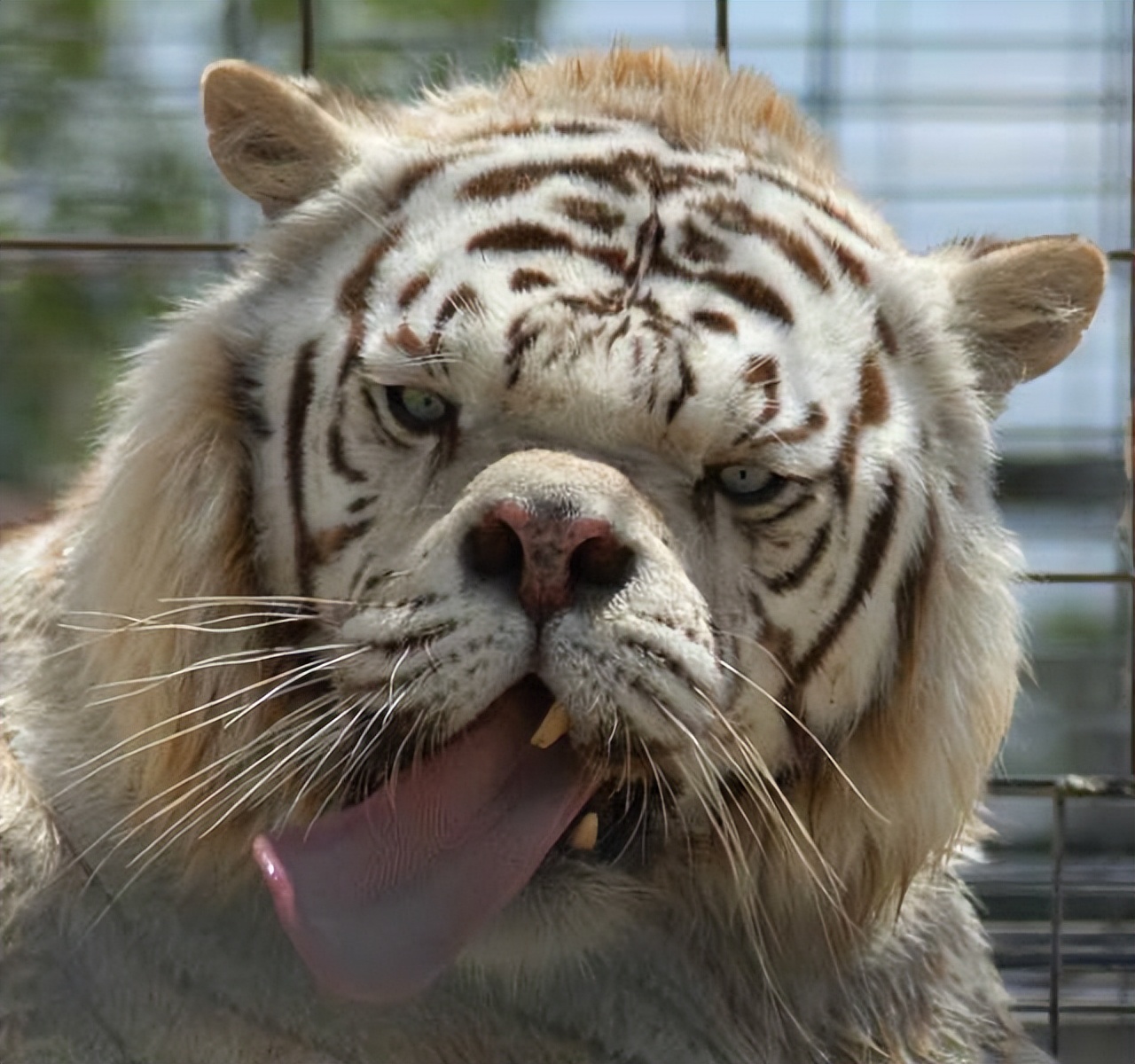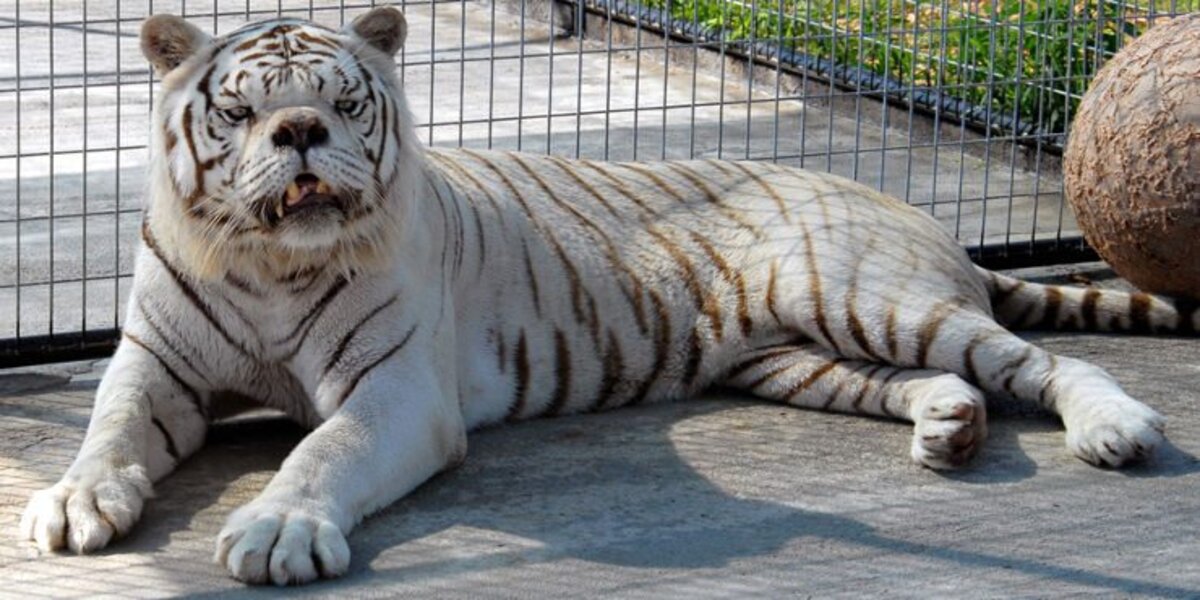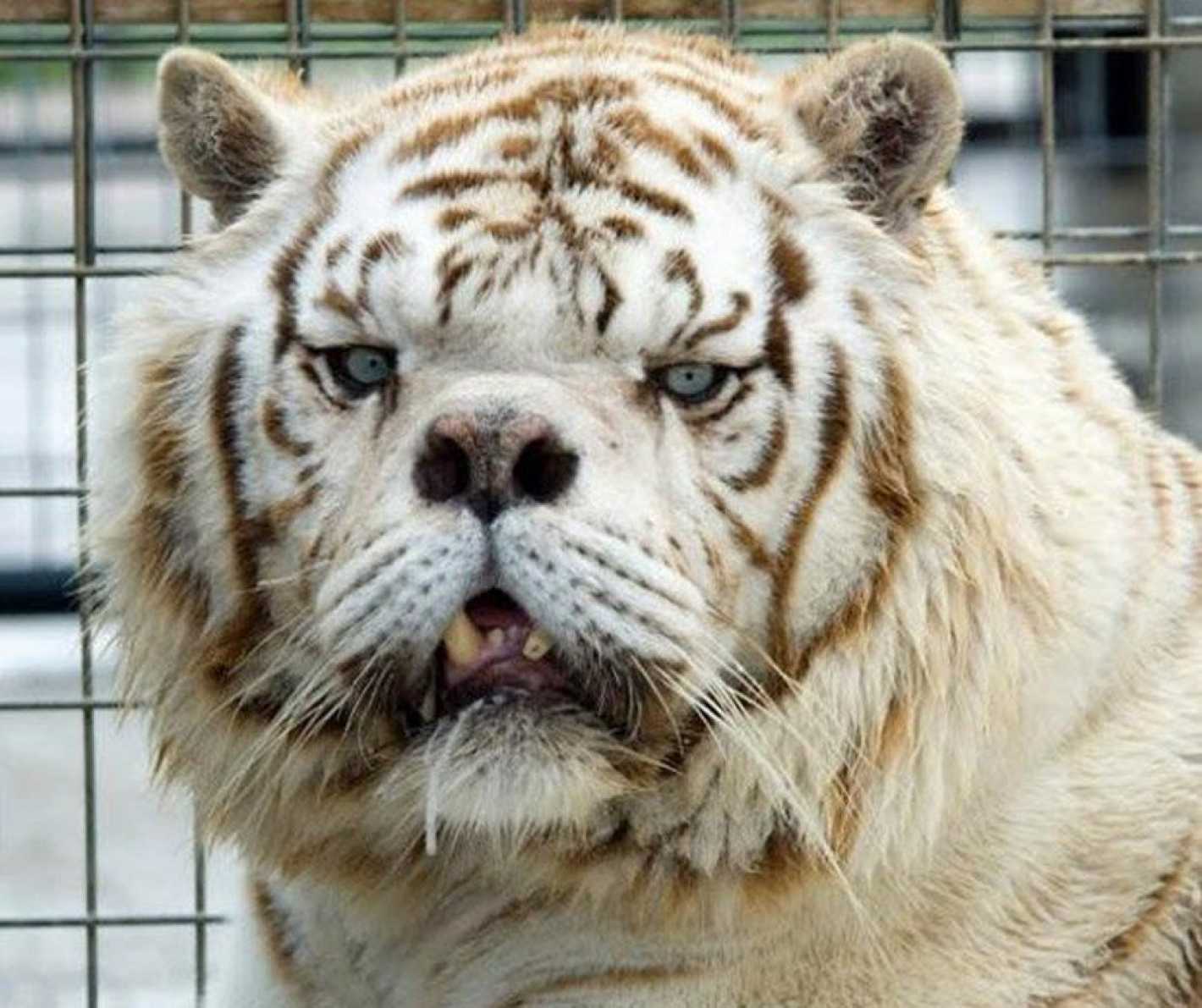Kenny The White Tiger - The Down Syndrome Tiger Story
Table of Contents
- Introduction
- What Was Kenny's Story, the Down Syndrome Tiger?
- How Did Kenny Become Known as the Down Syndrome Tiger?
- What Did Scientists Say About the Down Syndrome Tiger Claim?
- The Real Story Behind Kenny's Look
- Why Do People Keep Talking About the Down Syndrome Tiger?
- The Sad Truth About White Tiger Breeding
- What Can We Learn from the Down Syndrome Tiger's Life?
- A Legacy of Awareness
There's a picture that has been shared around the internet for a very long time, showing a white tiger with a truly distinct face, often labeled as having "down syndrome." This particular animal, named Kenny, captured the hearts of many folks online, his image spreading far and wide. It's a story that, in a way, has become quite well-known, yet the true details behind his appearance and his life are often missed, replaced by a simple, misleading caption.
The notion that Kenny, a white tiger, possessed a human genetic condition like Down syndrome really took hold, creating a lot of buzz. People were fascinated by his unique look, which, to some, seemed to mirror the facial features sometimes seen in people with Down syndrome. This led to a widespread, though inaccurate, belief that tigers, too, could experience this specific chromosomal difference, sparking conversations and a fair bit of curiosity across various online spaces.
Yet, the actual story of Kenny, the white tiger, is a good deal more involved and, honestly, a bit heartbreaking than what those viral pictures might suggest. His striking appearance, which many found so compelling, wasn't a result of Down syndrome at all. Instead, it points to a much deeper, more troubling issue within the world of exotic animal breeding, a practice that, quite often, puts profit ahead of an animal's well-being. So, let's get to the bottom of what really made Kenny so distinct.
What Was Kenny's Story, the Down Syndrome Tiger?
Kenny, a white tiger, came into the public eye because of his rather unusual facial features. He had a face that just looked different from what you'd expect a tiger to have, with a somewhat flattened nose and wider-set eyes. This distinct appearance, as a matter of fact, made him quite memorable to anyone who saw his pictures circulating online. He was, in essence, a creature whose look stood out from the usual, making him a focal point for discussion and speculation about his health and background.
Rescued by the folks at Tiger Creek Wildlife Refuge (TCWR) nearly two decades ago, Kenny's journey began with a lot of hardship. He was, apparently, one of several animals taken in by the refuge, which works to provide a safe place for big cats. His situation before the rescue was, in short, quite sad, pointing to a history where his welfare was clearly not the main concern. The refuge's efforts were about giving him a better life, a chance at some peace after what he had been through.
How Did Kenny Become Known as the Down Syndrome Tiger?
Kenny's fame as "the tiger with down syndrome" really took off online. A photo of him, showing his distinct face, started to make the rounds, and people just assumed his appearance was due to this human condition. It was, you know, an easy label to attach to something that looked so different. This simple, yet incorrect, explanation caught on like wildfire, turning Kenny into a kind of internet sensation and a symbol for something he didn't actually have.
The pictures and videos of Kenny, the "down syndrome tiger," kept circulating online, creating a lot of conversation. Many people, seeing his unique look, genuinely believed he had the condition. This widespread sharing meant that, more or less, a lot of folks were exposed to this inaccurate idea. It highlights how quickly a story can spread and become widely accepted, even if the underlying facts aren't quite right.
What Did Scientists Say About the Down Syndrome Tiger Claim?
Leading geneticists, the folks who really know about genes and how living things work, have consistently stated that the idea of Kenny having Down syndrome just isn't true. They've looked at the science, and there's clear evidence that a tiger can't get Down syndrome in the same way a human can. It's, to be honest, a fundamental difference in how our bodies are put together at a very basic level, making the claim scientifically impossible for a tiger.
The scientific community has been pretty clear on this point, emphasizing that the specific genetic setup that causes Down syndrome in people simply doesn't happen in tigers or other animals in the same way. So, when pictures of Kenny, the "down syndrome tiger," spread, experts quickly pointed out the scientific inaccuracies. They explained that while animals can have genetic quirks or conditions, this particular one is specific to humans, making the viral label a bit of a misunderstanding.
The Real Story Behind Kenny's Look
Kenny's unique appearance, which made him so well-known, was actually the result of a very sad practice: inbreeding. This happens when animals that are too closely related to each other are bred, often to try and produce specific traits, like the white coat of a tiger. This practice, however, often leads to a whole host of health issues and physical differences, as a matter of fact, because the gene pool becomes too small and unhealthy traits become more common.
His story, therefore, is a lot more tragic than just a simple genetic condition. It involves a long history of breeding practices that prioritize certain looks over the health and well-being of the animals themselves. Kenny's distinct face and other health challenges were a direct consequence of this kind of breeding, where, basically, the focus was on getting a white tiger, no matter the cost to the animal's health. It's a stark reminder of the problems that can arise when animals are bred without proper care for their genetic health.
Why Do People Keep Talking About the Down Syndrome Tiger?
The image of Kenny, often labeled as the "down syndrome tiger," became incredibly popular on the internet. His unusual face was certainly memorable, and the story attached to it, even if false, was quite compelling. People tend to share things that are striking or unusual, and Kenny's picture fit that bill perfectly. So, it's almost as if the image itself, combined with the mistaken idea, created a lasting impression that continues to be discussed.
Even though Kenny passed away a while ago, pictures and videos of him are still making the rounds online. Many people, seeing this content, might not realize that the animal is no longer alive, and they continue to refer to him as the "down syndrome tiger." This persistence in sharing old content, without updated information, means the story, with its inaccuracies, just keeps getting passed along. It's, like, a bit of a digital echo chamber, you know?
The Sad Truth About White Tiger Breeding
Kenny's unique appearance, which was mistakenly attributed to Down syndrome, was actually a direct outcome of exploitative breeding. White tigers, you see, are not a distinct subspecies; they are simply Bengal tigers with a genetic mutation that removes their orange pigment. To consistently produce white tigers, breeders often resort to inbreeding, pairing very closely related animals. This practice, in fact, drastically increases the chances of genetic problems and deformities.
This particularity of white tigers, their color being a genetic quirk, means they are much more susceptible to genetic issues when bred for that specific trait. The drive to create more white tigers for display or sale, often for profit, leads to these problematic breeding practices. It's a sad reality that, in some respects, the desire for a visually striking animal overshadows the responsibility to ensure its health and quality of life. Kenny was, in short, a victim of this system.
What Can We Learn from the Down Syndrome Tiger's Life?
Kenny's story, the "down syndrome tiger" as he was called, serves as a powerful reminder about the importance of getting our facts straight, especially when it comes to animals. It shows us how easily misinformation can spread, and how quickly a simple picture can lead to a widely held, yet incorrect, belief. Learning about Kenny helps us think more critically about what we see online and encourages us to look for the real story behind striking images, rather than just accepting the first explanation we come across.
His life, though marked by the consequences of irresponsible breeding, also helped bring attention to the plight of white tigers and the issues surrounding their existence. Kenny became a kind of "poster child," you know, for the problems that come from inbreeding and the exploitation of animals for specific traits. His story, in a way, helped shed light on the darker side of exotic animal breeding, prompting conversations about animal welfare and responsible care.
A Legacy of Awareness
From Kenny the tiger to other stories about animals with unusual looks, the internet has shown us a lot of content that sparks curiosity about animal conditions. But what's the actual truth about their health? Kenny's case really pushed people to ask those questions. His widely shared image, though mislabeled, ultimately led many to seek out the real facts about animal genetics and the ethics of breeding, which is, in fact, a good thing.
Kenny's experience, the white tiger with the unique appearance, eventually went viral online, not just because of his looks, but because it opened up a discussion about the origins of such differences. It highlighted the devastating impact of exploitative breeding practices. Reading about Kenny, and the real reasons behind his condition, helps us to better understand the challenges faced by many animals in captivity and encourages a more informed approach to animal appreciation and protection. It's, honestly, a story that still has a lot to teach us.

The least powerful tiger in the world. Meet Kenny, the Tiger with Down

Kenny, the white tiger with Down's Syndrome | Newz

Kenny, la historia del tigre que nació con síndrome de Down - Mendoza Post